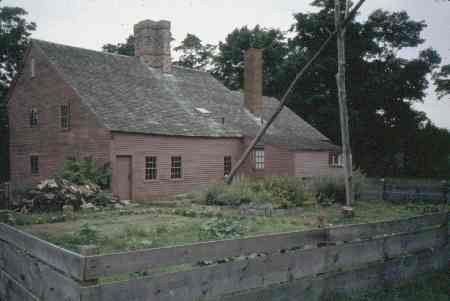
Danvers
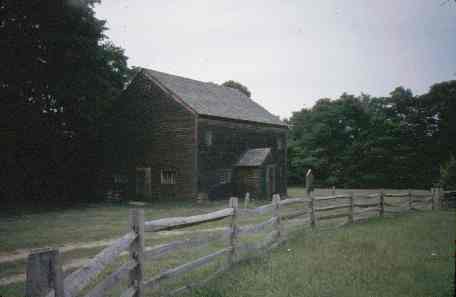
| Canoeing | Skiing | Bicycling | Forum |
Clothing |
Equipment |
Vehicles |
Readings |
 |
Danvers |
 |
| Before you visit Danvers, we highly recommend you watch the film "Three Sovereigns for Sarah," starring Vanessa Redgrave. It is a very accurate version of what happened in 1690-92. It was filmed on location in Danvers, using the exact sites you will be visiting, except of course for Reverend Parrish's house, for which they had to build a modern semblance. And you need to understand a very important fact : the people of Salem Towne were so determined to separate themselves from their embarassing past that they changed the name of their community to Danvers and to this day do not welcome tourists studying the witch hysteria. Therefore, do not expect any help. The general answer to your questions about locating something is that they don't know. You need to be a detective and hunt things down. Fortunately, Danvers is not large and everything you want to see is close together at the original center of the village. | 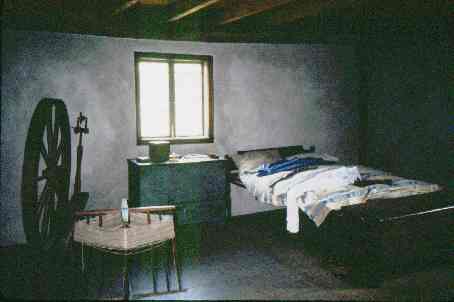 |
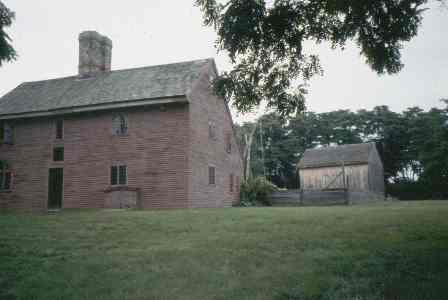 |
The Rebecca Nurse Homestead is
your first stop. Three sisters were at the center of the witchcraft trials
and everything in real life and in the film revolves around this house.
It is still in the family after 315 years and has been beautifully preserved.
You can tour the house, barn, workshop, garden and farm. This was certainly
no mansion like The House of Seven Gables, but it was a very large and
sturdy farm home. You can visit the bedroom from which the ill Rebecca
was dragged off to trial (above right), see the garden Mary Estes was
working in the day she was arrested (top left), and the dining room table
at which Sarah Cloyse drew up the petition she hoped would free her sisters
(They had married by 1690, so no longer shared the same last name). All
this furniture was original. They even maintain the same paint on the
outside of the house, a mixture of cranberry juice and milk. Your visit
here will be much more dramatic if you watch the film first. Apart from
the witchcraft element, we think the large sundial over the door and the
huge cantilevered well (top left) are interesting. One caution : the family
does not open the house and grounds to the public each Summer until June
15, but if you call a few days ahead they will make special arrangements
for you. |
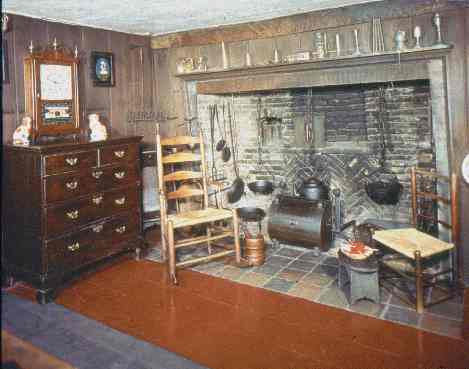 |
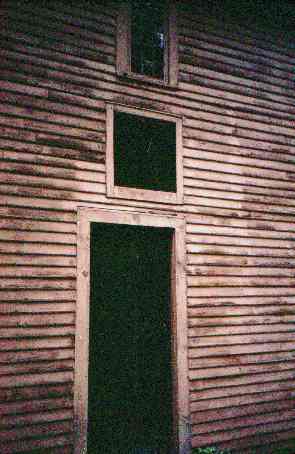 |
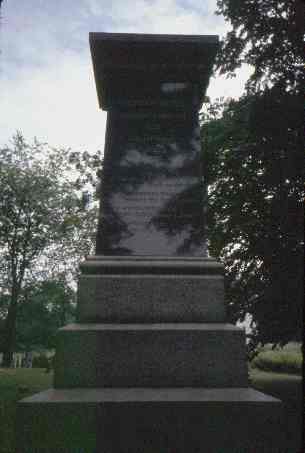 |
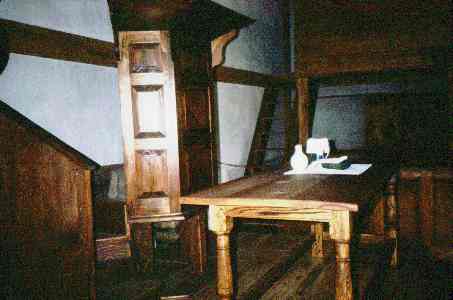 |
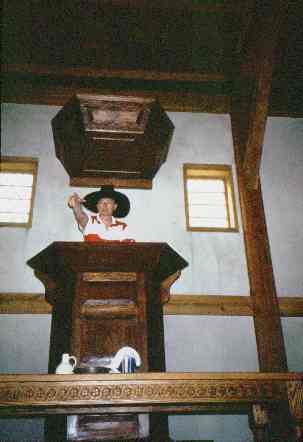 |
Left to Right : Nurse main fireplace, Sundial over farmhouse door, Rebecca's monument, Judges table from witch trials, Podium from which Reverend Parrish spoke during the years 1690-92, the "witch years." |
| The Puritan Meeting House is across the road from the Nurse homestead. It is large and impressive for a small isolated rural village, and has some interesting features. Note that from the outside there is no religious adornment. The building was extremely simple. The Puritans did not believe in elaborate, highly visible churches. Inside, families or couples did not sit together. Men sat to the right, women to the left, boys in the right balcony and girls in the left balcony. The high pulpit allowed the minister to look down on the audience, and the sounding board over his head reflected his voice outward to the congregation. If you view the movie, you will have a clear picture of what this meeting house looked like during the services and the witchcraft trials. There are only a few of the old 1600s meeting houses left, most in bad shape. This is probably the best remaining example we have of what they would have looked like. At one time, every village in New England had a church that looked very much like this. The seats were simple with no backs, but at least the people were not required to stand for the entire service as they were in Salem in 1640. | 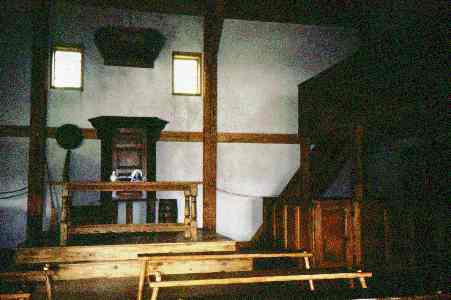 |
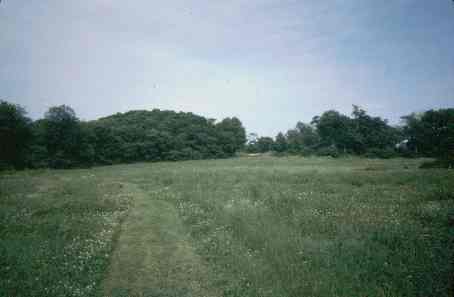 |
The Graveyard is down the hill from the Meeting House. To the right, coming down the still unpaved road, stood the infamous Hanging Tree, where 20 innocent Puritans were put to their death. (Sam Cloyse chopped it down in a symbolic gesture.) After each hanging, the body would be cut down, hauled away and dumped in a common grave. After the hysteria had ended two years later, families went back and found the remains. They brought them to this field and reburied them, but by that time it was not possible to identify whose remains were whose. So they buried each set of remains anonymously, which is why the unmarked stones. Then, in the center, they erected the large monument with all their names. One additional set of remains was located in 1995 using modern archaeological techniques, and after five years of study, they were reburied in 2000 with a separate marker. |
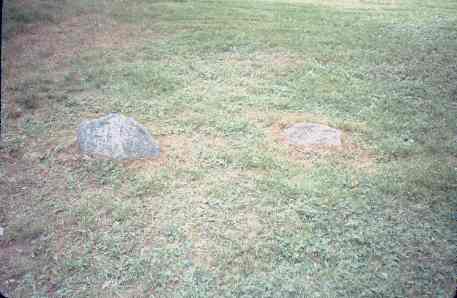 |
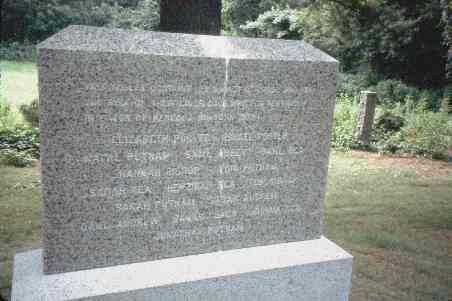 |
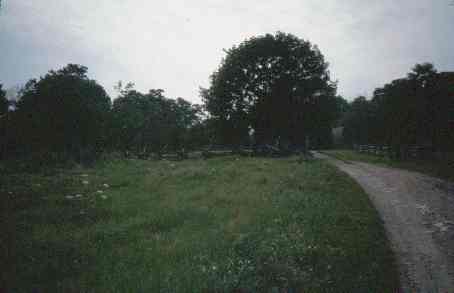 |
Left to Right : Unmarked grave stones. A circle of these surrounds the central marker. Central Marker with all names. Looking back up toward the farm from the graveyard. The hanging tree would have been to the left. |
| The Reverend Parrish Foundation sits a mile apart from the other sites. And it will be the most difficult for you to locate. The secret is : it's not on a main street, but down an alley. Once you find it, there are two markers. One is a 20th century historical plaque, the kind you see along roadsides everywhere. The other is an old engraved stone placed there in 1710 by the families of the innocent victims. After they drove Reverend Parrish from office (he would never again serve as a minister), they burned his house (the parsonage) to the ground, and left the foundation as a permanent marker. Inside the fence, you can see the two squares of stones and depressions, which would have served as storage cellars, similar to modern basements. The Puritan stone reads "Let these ruins serve as an eternal warning to those who would use the words of the Almighty God for their own selfish interests to the detriment of His loyal followers." | 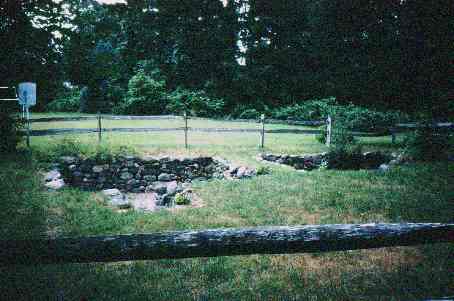 |
|
|||
|